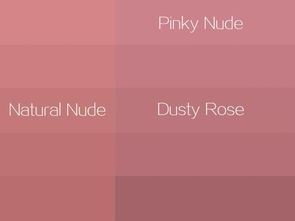Understanding Skin Tone Categories: A Comprehensive Guide
Have you ever wondered about the different skin tone categories and how they are defined? Skin tone is a complex and nuanced aspect of human diversity, and understanding its categories can provide insight into the rich tapestry of human skin colors. In this article, we will delve into the various skin tone categories, their definitions, and the factors that influence them.
What Are Skin Tone Categories?

Skin tone categories are a way to classify and categorize the wide range of skin colors found in human populations. These categories are often based on the Fitzpatrick Skin Type Scale, which was developed by Thomas B. Fitzpatrick in 1975. The scale categorizes skin tones into six types, ranging from very light to very dark.
| Category | Description |
|---|---|
| I | Very fair skin, prone to burning easily, rarely tans |
| II | Fair skin, prone to burning, tans minimally |
| III | Light to medium skin, prone to burning, tans moderately |
| IV | Medium to olive skin, rarely burns, tans well |
| V | Dark to very dark skin, never burns, tans very easily |
| VI | Very dark skin, never burns, tans very easily |
The Fitzpatrick Skin Type Scale is widely used in dermatology and skincare, as it helps professionals understand how different skin types react to sunlight and UV radiation. However, it’s important to note that this scale is not without its limitations, as it primarily focuses on Caucasian skin tones and may not accurately represent the diversity of skin colors in other ethnicities.
Factors Influencing Skin Tone

Several factors contribute to the variation in skin tone, including genetics, environment, and lifestyle. Here are some of the key factors that influence skin tone:
- Genetics: The genes you inherit from your parents play a significant role in determining your skin tone. Melanin, the pigment responsible for skin color, is produced by melanocytes in the skin. The amount and type of melanin you produce are influenced by your genetic makeup.
- Environment: Exposure to sunlight and UV radiation can cause skin to tan, which can affect your skin tone. People living in regions with high UV radiation levels may have darker skin tones as a natural protection against the sun’s harmful rays.
- Lifestyle: Factors such as diet, hydration, and skincare routines can also impact your skin tone. For example, a diet rich in antioxidants can help protect your skin from damage and maintain its natural tone.
Understanding Skin Tone Categories in Different Cultures

Skin tone categories can vary significantly across different cultures and ethnicities. Here’s a brief overview of how skin tone is perceived in some of the world’s major ethnic groups:
- Asian: In many Asian cultures, fair skin is often associated with beauty and status. This perception is influenced by historical factors, such as the preference for pale skin among the elite during the Tang Dynasty in China.
- African: In African cultures, skin tone is often seen as a reflection of one’s heritage and social status. Darker skin tones are often associated with a higher social status, while lighter skin tones may be associated with a lower status.
- Hispanic: Hispanic cultures have a wide range of skin tones, from very light to very dark. Skin tone is often seen as a reflection of one’s ancestry, with lighter skin tones often associated with European heritage and darker skin tones with indigenous or African heritage.
- Indigenous: Indigenous cultures around the world have diverse skin tones, influenced by a combination of genetic and environmental factors. Skin tone is often seen as a reflection of one’s connection to the land and community.
Conclusion
Understanding skin tone categories can help us appreciate the vast diversity of human skin





